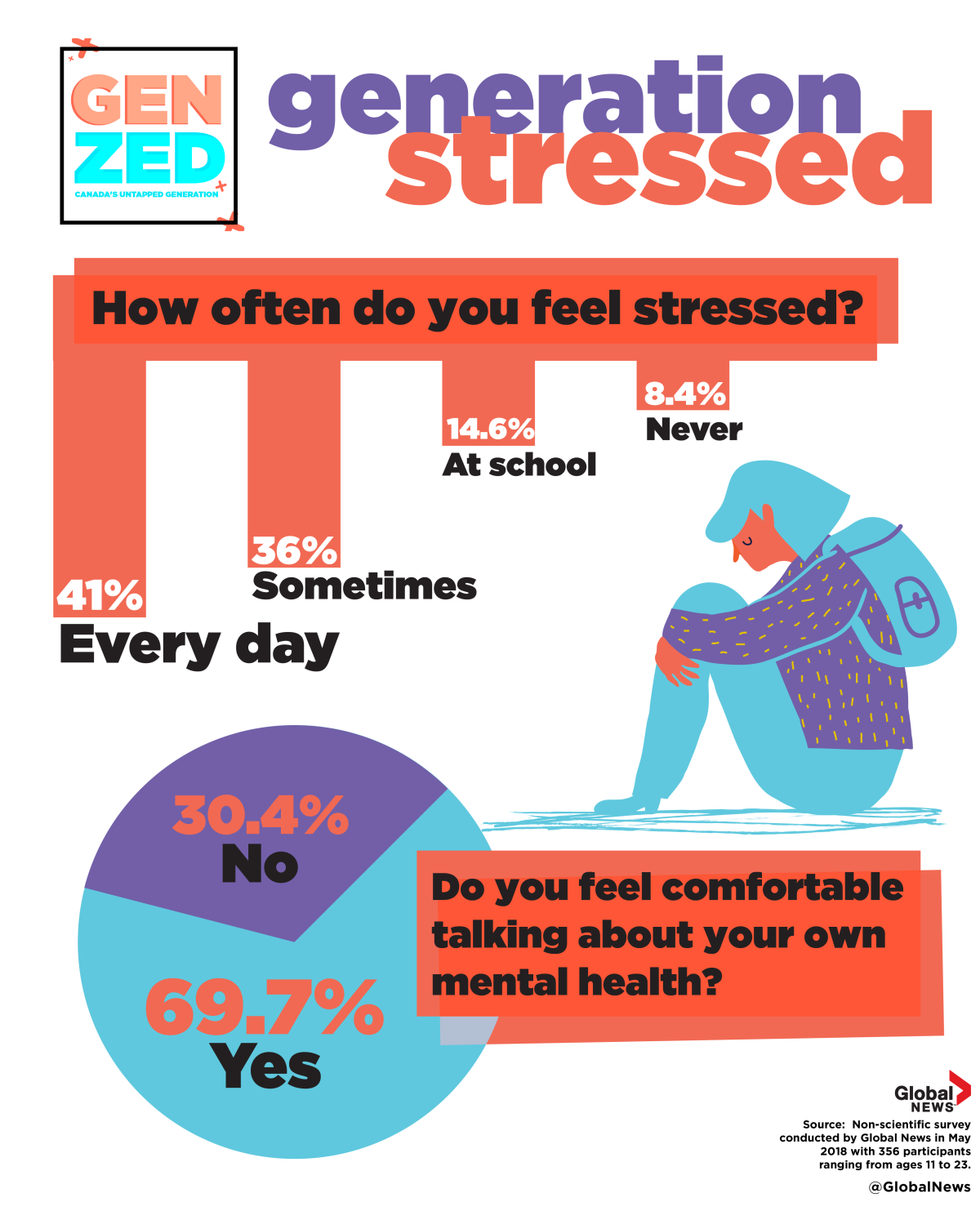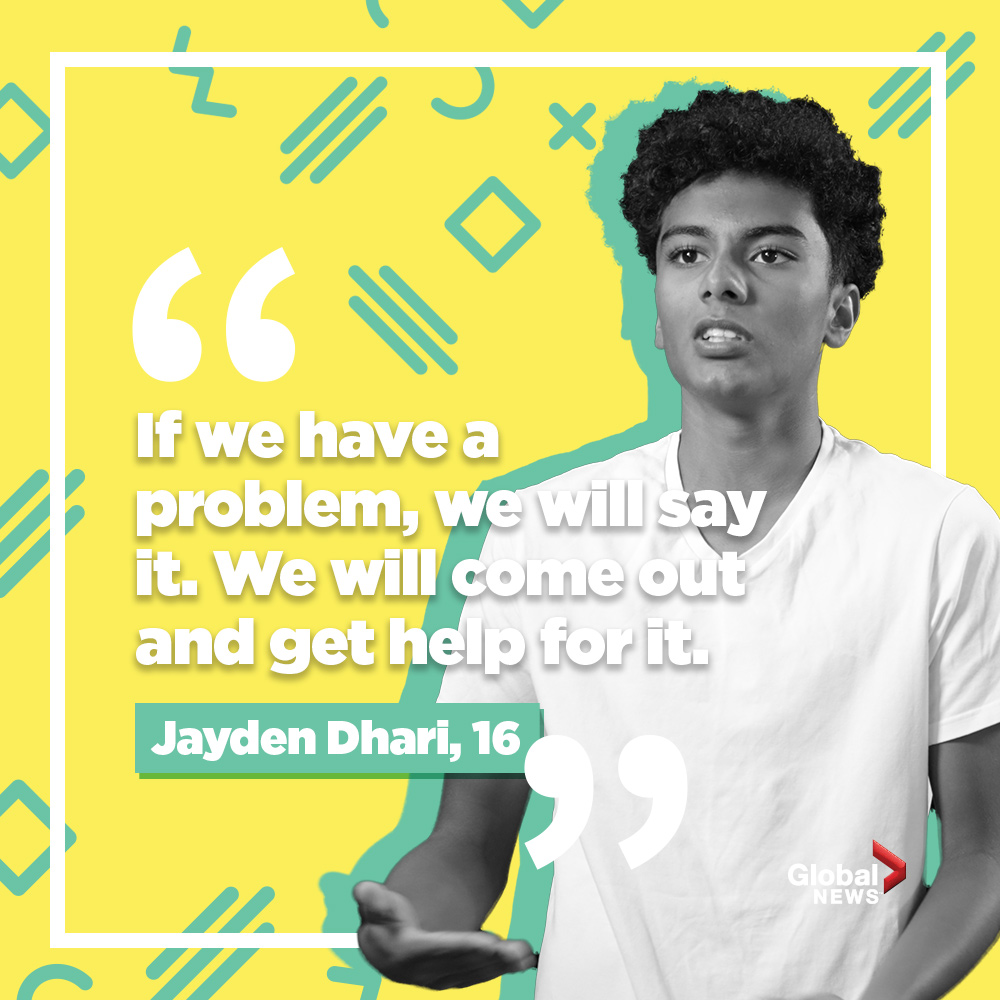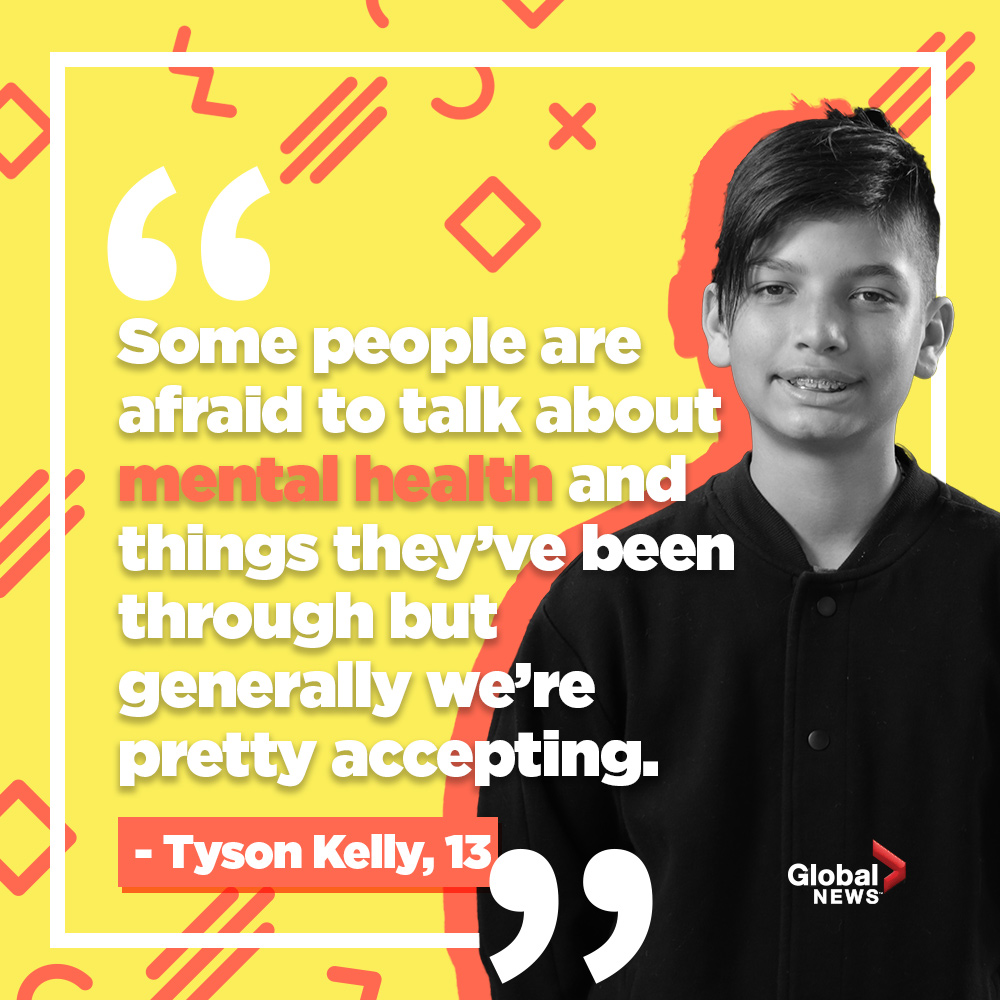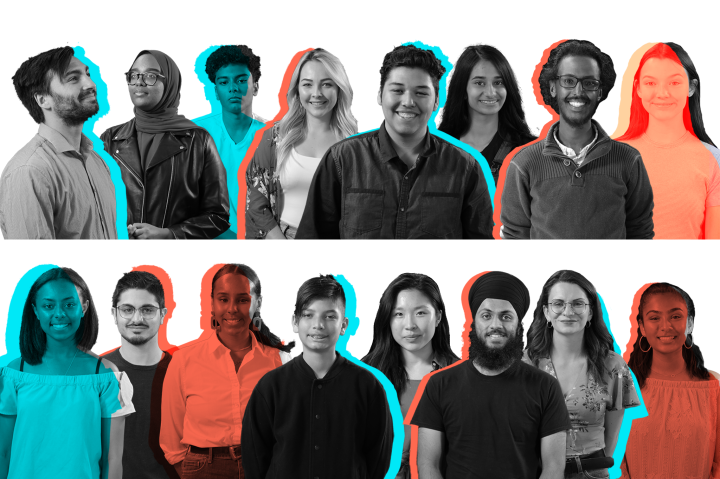
Shailee Korrane was still in high school when she had her first panic attack.
Eventually, she decided to seek help. “I was obviously very afraid,” she tells Global News. “It was actually a friend who was diagnosed with bipolar disorder who kind of sat me down and said, ‘I’m really worried about your health and you remind me of me before I sought care.’”
She decided to talk to her mother, who laughed and asked her, “How can you be depressed?”
“I think because my outward personality was of someone who was academically successful, good at making friends, appeared neurotypical, it was hard for the people around me to think that anything was up.”
Korrane’s story isn’t unique. Many young Canadians her age — otherwise known as generation Z — are struggling to have their mental health issues recognized and treated in a timely manner.
WATCH: Generation Z — Let’s talk mental health

Progress has been made, but there is a long way to go.
Generation Z makes up roughly 17.6 per cent of Canada’s total population, according to 2017 data from Statistics Canada. Although there is no established start or end date, experts say gen Z-ers are born between 1995 and 2005, making the youngest 13 and the oldest 23. Some argue the generation ends at ages 22 (1996) or 24 (1994). This is still a growing population, one that may not have had traditional life experiences (jobs, mortgages, etc.) thrown at them. They are still optimistic about what their future holds — and truly believe they can change it.
Seeking help
It wasn’t until Korrane was in her first year of university that she decided to try again to find help for her depression. “It got to the point where I was skipping all my classes and really not able to get out of bed, that I sought care.”
Even then it wasn’t easy: she had to go through several people before she finally sat down with a counsellor in the school’s health services. “That was honestly exhausting, having to qualify my mental illness with strangers who didn’t know me at all.”
And then, she was asked to take a blood test — and couldn’t get in touch with the clinic. So she gave up again, she says.
Last year, the 21-year-old went to her family doctor and was prescribed medication that she didn’t feel helped her.
Only this year did she manage to connect with a counsellor who she feels was able to help her manage her anxiety and depression — five and a half years after she first sought help and after she dropped university classes due to her difficulties.
One in five children and youth in Ontario will experience a mental health issue, and five out of six of them won’t get the treatment they need, according to a 2015 report by the Institute for Clinical Evaluative Sciences.
Although generation Z is often open about discussing their mental health and asking for help, the treatments they need aren’t always there, says Dr. Joanna Henderson, a clinical psychologist and executive director of Youth Wellness Hubs Ontario.
One example: hospital emergency room visits and in-patient hospitalizations for mental health problems among children and youth increased by 50 per cent between 2008-09 and 2016, according to the Auditor General of Ontario. Wait times for some specialized services can exceed six months.
“Oftentimes they are not able to access those mental health services at the time they need it most,” says Henderson.
WATCH: Who is Generation Z?

This doesn’t make sense to her. “Say my 13-year-old is diagnosed with a form of cancer. The testing that led to that immediately triggers a response. I immediately have access to a treatment team. Even if we don’t have a cure.”
“Suicide is the second-leading cause of death for teens. Cancer is not the first. Car collisions are first. Cancer is significantly below the risk of suicide. And yet people will be told, ‘You know what, we’re really lucky in Toronto, we have lots of organizations. Call all of them and get on the waiting list.’”
“We would just not tolerate that in another field of health.”
The system is confusing too. “I’ve been in and out, cycling through the system since I was 15 and I still don’t know how to find a therapist,” says Paige Fisher, a 22-year-old York University student.
She feels “lucky” that she was able to get help with her depression and anxiety through the school system, but it was still hard, she says. She visited a guidance counsellor, and eventually got access to a youth program – with a visit to the emergency room in between. But there was a long wait list for the youth program she visited, and it was far away and at odd hours.
“You hear about this amazing thing and then it’s like, all right, the waitlist is four and a half months for your intake session.”
After she turned 18 and went to university, she again got on a waiting list there. Unfortunately by the time she got a call for her appointment, months later, she had already switched universities and moved back home across the province to better deal with her problems.
“So I got the call and I was like, ‘That’s awesome. I don’t live there anymore.’”
She wonders too what people do if they’re over 18 and not in school. “I’m really lucky right now because I’m still a student so I’m covered under my parents’ drug plan for my medication. But after I turn 25 I have no idea what I’m going to do.”
“I have friends who are facing similar challenges and they don’t have insurance.”
She figures they may have no choice but to “just be depressed.”
WATCH: Generation Z – Who is Canada’s connected and optimistic generation?

Henderson’s project, Youth Wellness Hubs Ontario, is trying to solve all of these problems by offering a one-stop walk-in location where teens and young adults can find assistance, rather than trying to navigate a confusing array of services.
“Young people don’t know where to go. Families don’t know where to go,” she says. She hopes that as the mental health hubs expand across Ontario, people will understand that this can be a first point of contact.
Still room for talk
Generation Z is more willing to talk about their mental health problems, said Korrane, but only some of them. “I think that my generation in particular likes talking about mental health that’s easy to talk about,” she says.
People are more open about anxiety and depression, but not things like schizophrenia, Korrane says.
Fisher agrees. “The stigma around anxiety and depression, that has lessened a lot. But in terms of less socially-acceptable mental illnesses: we don’t talk about borderline personality disorder, we don’t talk about schizophrenia.”
“There’s still a lot of work to do.”
Korrane believes that many people make assumptions, like something bad must have happened to you to cause your mental illness — something she says isn’t true at all for her.
She isn’t sure that most people really understand what living with mental illness is really like.
“I’m sure that by now someone must have complained to you about how annoying it is to hear things about eating better or doing yoga or going for walks, because when you’re depressed you can’t really get out of bed to go on a walk.”
“I think that people misunderstand the severity of what some of these conditions actually are.”
This week, Global News will take a look at the many ways gen Z functions, from their views on mental health and the job market to how they take part in pop culture. As you’ll see, this is still a largely untapped generation. Follow along on Twitter with the hashtag #GenZed.
— Illustrations by Laura Whelan
















Comments